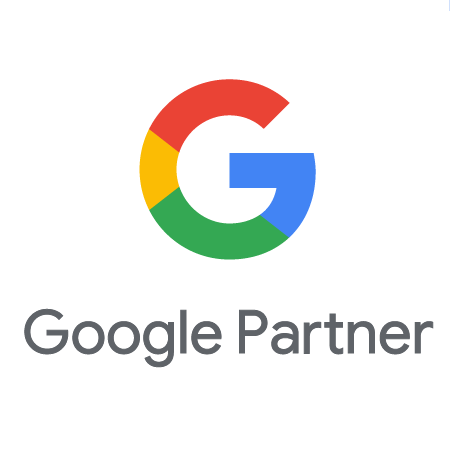Do You Need a Lawyer Conflict of Interest Checklist?

Consider this real-world scenario. Mrs. Jones calls a law firm with regard to a child custody matter. The minor child’s name is Johnny Jones. The firm asks who the opposing party is in the case. Mrs. Jones tells you that it is Johnny’s father, Billy Jones.
Assume that the law firm in this example does not do a conflict of interest check. As it turns out, another partner in the firm spoke to Billy Jones about a week ago and signed him up as a client of the firm.
Billy Jones was asking about child custody rules, and he gave the partner a great deal of information about his position in the case. Billy shared with the partner all about his plans to win custody from his wife, and he even noted that he has a secret stash of photographs of his wife that are compromising and will impact the child custody case for sure.
You can also assume that our law firm in this example is a family law firm that has hit some financial difficulties lately. It really could use more business, and the fees from a child custody matter would certainly help keep the lights on and the doors open.
What is the problem? Well, now two people in the same firm know both sides of an upcoming child custody matter. In fact, one party provided the firm with a great deal of confidential information on how he plans to win the case.
What happens to the firm? The firm loses its business entirely. It cannot represent either of the Joneses because it has a conflict of interest. One cannot assume that one firm partner will not speak with another. And now, two partners know both sides of the story in a heated child custody battle.
How could this have been avoided? A lawyer conflict of interest checklist.
When Does a Conflict of Interest Occur?
You took Ethics or Professional Responsibility class in law school. You took the Multistate Professional Responsibility Exam (MPRE) before graduating from law school. You know how important it is that you practice law without anything that might impede your objective and zealous representation of a client. The basis of that objective representation is that you have no conflict of interest in the case.
In this blog, we will discuss the issue of conflicts of interest, and then discuss the elements of a good lawyer conflict of interest checklist.
With regard to the question of when does a conflict of interest occur, a conflict of interest occurs when:
1. Representation of a client will be directly adverse to another client of the firm; or
2. Representation of the client would be adversely impacted by the firm’s duty to another client, duty to a former client, or by the personal interest of an attorney at the firm.
What Would a Lawyer Conflict of Interest Checklist Look Like?
The way to avoid any conflict of interest – and avoid the problem presented by the Jones’ child custody matter – is to have a lawyer conflict of interest checklist. Here are the main components of a lawyer conflict of interest checklist:
1. Attorney and staff disclosure . First, all lawyers and staff at a firm must provide sufficient information about potential conflicts relating to past clients at prior jobs, without the need to divulge confidential information.
2. Potential client disclosure . Before your firm has an initial consultation with a potential client, you need to have the potential client disclose information about all the names they go by, the names of the opposing parties, and the names of any associated parties or entities.
3. More disclosure at the initial consult . Once you meet with a potential client during the initial consultation, obtain more identifiers and information in order to do a more complete conflicts check.
4. The conflicts check . With all of the information obtained from the potential client, you then need to review the master list of clients, the former client list, and the subject matter list if necessary.
5. Conflicts search results. Following the conflicts check, you need to circulate a memo to all attorneys and staff that includes the potential client’s information. Ask for not only a review of the memo but that everyone provides input on any possible conflicts.
6. Follow up . To be certain of any possible conflicts, follow up with attorneys and staff who do not return the conflict search result memo.
7. Analyze . With the comprehensive conflict check results and any input from attorneys and staff related to the conflicts memo in hand, evaluate the information to see if a conflict exists.
8. No Conflict? If no conflict of interest is found, then enter the new client into the conflict system and send an engagement letter.
9. Conflict? If a conflict is found, and the firm cannot accept the representation, then the firm should send a non-engagement letter, explaining the conflict.
10. Waiver? The firm can still accept the representation if the potential client waives the conflict. To make sure that a waiver is knowing, the firm should do the following:
a) Explain the circumstances that give rise to the actual or potential conflict of interest;
b) Explain the possible negative consequences of those circumstances;
c) Note that no attorney-client privilege would exist if a potential conflict arises from dual or multiple representations;
d) Disclose all relevant non-privileged facts necessary for the potential client to make an informed waiver of the conflict.
11. Obtain informed consent . After advising the potential client of the above, get written consent from the potential client, waiving the conflict. Once the written consent is obtained, then enter the new client into the conflict system and send an engagement letter.
12. Continue checking . Every time a new party enters into a legal matter after you have taken on the new client, a new conflict check should be run. If there is a conflict upon the entry of a new party, then the firm needs to withdraw and send a disengagement letter.
It should be noted that informed consent, while helpful, does not always cure all conflicts of interest. Thus, a conservative approach would be to avoid any client who presents a potential conflict of interest.
Oamii Can Help with Your Lawyer Conflict of Interest Checklist
As you digitize your marketing efforts,
Oamii
can also help you with conflict checking any potential client you obtain through your digital marketing. If you want more information about partnering with
Oamii
, the top law firm
digital marketing agency in West Palm Beach, Florida
, then please fill out our
online contact form
, or call us at
561-228-4111 today.
Disclaimer: The information on this website and blog is for general informational purposes only and is not professional advice. We make no guarantees of accuracy or completeness. We disclaim all liability for errors, omissions, or reliance on this content. Always consult a qualified professional for specific guidance.








